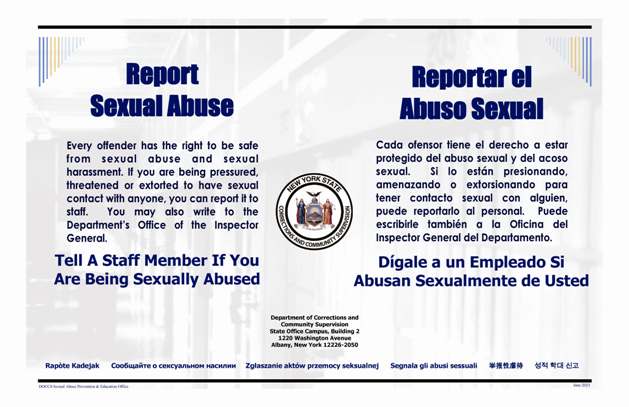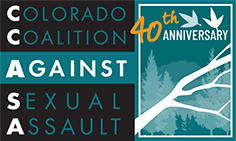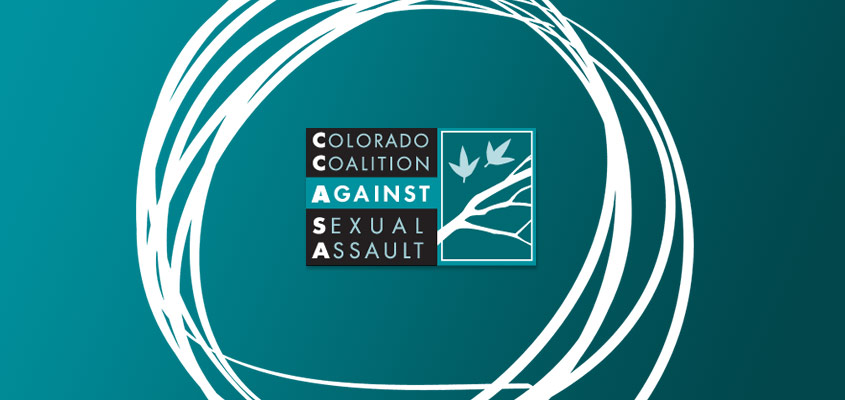By Karen Moldovan, CCASA Blogger
If you have Netflix or you are active on social media sites, chances are you may have heard about the Netflix original series, Orange is the New Black (OITNB). The series is loosely based on a memoir (which I haven’t read) written by Piper Kernan, about her time in a federal penitentiary for drug offenses. The show isn’t just centered on Piper’s experience, but uses a series of flashbacks to explore the lives of other women at the Litchfield Prison. Each episode delves into one inmate’s life, and gives the viewer a snapshot of the history, circumstances and/or decisions that contributed to the incarceration.
 There have been many blog posts analyzing representations of race, class, and sexual and gender orientation on OITNB. I highly recommend reading them all. What I haven’t seen any dialogue about is the portrayal of sexual violence. It is depicted as an everyday reality, and a part of prison culture that is as ubiquitous as bad food or conflicts between inmates. Is the show trivializing this violent crime or intending to create a commentary about the reality of sexual harassment and sexual violence for incarcerated women?! I’m not sure yet, but it’s worth discussing.
There have been many blog posts analyzing representations of race, class, and sexual and gender orientation on OITNB. I highly recommend reading them all. What I haven’t seen any dialogue about is the portrayal of sexual violence. It is depicted as an everyday reality, and a part of prison culture that is as ubiquitous as bad food or conflicts between inmates. Is the show trivializing this violent crime or intending to create a commentary about the reality of sexual harassment and sexual violence for incarcerated women?! I’m not sure yet, but it’s worth discussing.
Spoiler Alert!! If you haven’t watched the full first season yet, but intend to, stop reading this blog right now, but revisit it when you are all caught up on the episodes!
As OITNB unfolds, it gently alludes to the previous sexual trauma of some of the inmates. Two scenes in particular stood out for me. The first was Tricia Miller’s flashback, starting with her as a homeless runaway teen. She told a friend that anything, including being on the streets and engaging in survival sex, was better than being raped at home. I know it’s just tv, but I thought her storyline was so tragically accurate. The reality is that teens often run away from home, in order to escape sexual abuse perpetrated by a parent or step-parent. According to the National Runaway Safeline, 80% of runaway and homeless girls report previous sexual or physical abuse. Tricia needed safety, support, and trauma-informed therapy and care. Instead she found prostitution, drug addiction, prison, and overdose—a familiar reality for many marginalized youth.
The second scene was subtle, and centered on some dialogue while women were working in the kitchen. As they prepared tamales, they talked about how everyone had a molester in the family or the neighborhood while growing up. The women were almost blasé about it, which may have shocked some of the viewers. It didn’t surprise me at all though. The reality is that 93% of juvenile sexual assault victims know their attacker[i] and 42.2% of female rape victims experienced their first completed rape before the age of 18 years[ii]. What we know is that sexual violence is rarely discussed and shame and guilt is more likely to be projected on the victims, then the actual perpetrators. I really appreciated the scene because the women were discussing the prevalence of sexual violence in their lives and essentially bonding over it, while being sure to keep the blame centered on the perpetrators.
Research around the previous trauma of incarcerated women is staggering. For example, 92% of California’s female prisoners reported abuse prior to being taken into custody[iii]. Because of the equally staggering rates of sexual abuse during incarceration, the Prison Rape Elimination Act (PREA) was designed to provide information, resources, recommendations and funding to protect individuals from prison rape. Over the past few years, I’ve had many conversations with Corrections Officials, Survivors, and Advocates about how to ensure that our state is in compliance with the Prison Rape Elimination Act. Under PREA, inmates must know how to report a sexual assault, so many facilities put up posters with this information. The examples I’ve seen all unfortunately look like they were designed about 20 years ago and something about them makes me cringe. Does a poster help create an environment where someone feels safe enough to report sexual assault while incarcerated, especially if the perpetrator has threatened retaliation? I don’t know, but maybe it’s a start. The funny thing is that I noticed the same PREA style posters tacked up everywhere in the Litchfield prison. They are all over the fictional facility, which is an interesting juxtaposition, considering the sexual violence occurring there regularly.
Examples of PREA posters

 PREA is making concrete, solid steps in effective prevention and intervention of prison rape. For examples, the standards mandate that an inmate has access to confidential advocacy, medical care, and ongoing services following a report of sexual assault. Facilities must investigate reports, and hold offenders accountable. Compliance with the federal law is a work in progress, and folks working in this field are needed. Our November Regional Trainings (in Castle Rock, Glenwood Springs, and Durango) will focus on how communities can collaborate to better serve survivors of sexual abuse behind bars. Click to learn more and to register.
PREA is making concrete, solid steps in effective prevention and intervention of prison rape. For examples, the standards mandate that an inmate has access to confidential advocacy, medical care, and ongoing services following a report of sexual assault. Facilities must investigate reports, and hold offenders accountable. Compliance with the federal law is a work in progress, and folks working in this field are needed. Our November Regional Trainings (in Castle Rock, Glenwood Springs, and Durango) will focus on how communities can collaborate to better serve survivors of sexual abuse behind bars. Click to learn more and to register.
Next week… Karen dives into Officer Mendez and Officer Bennett— Are they both rapists?!


1 thought on “Rape Culture Alive and Well in OITNB (part 1 of 2)”